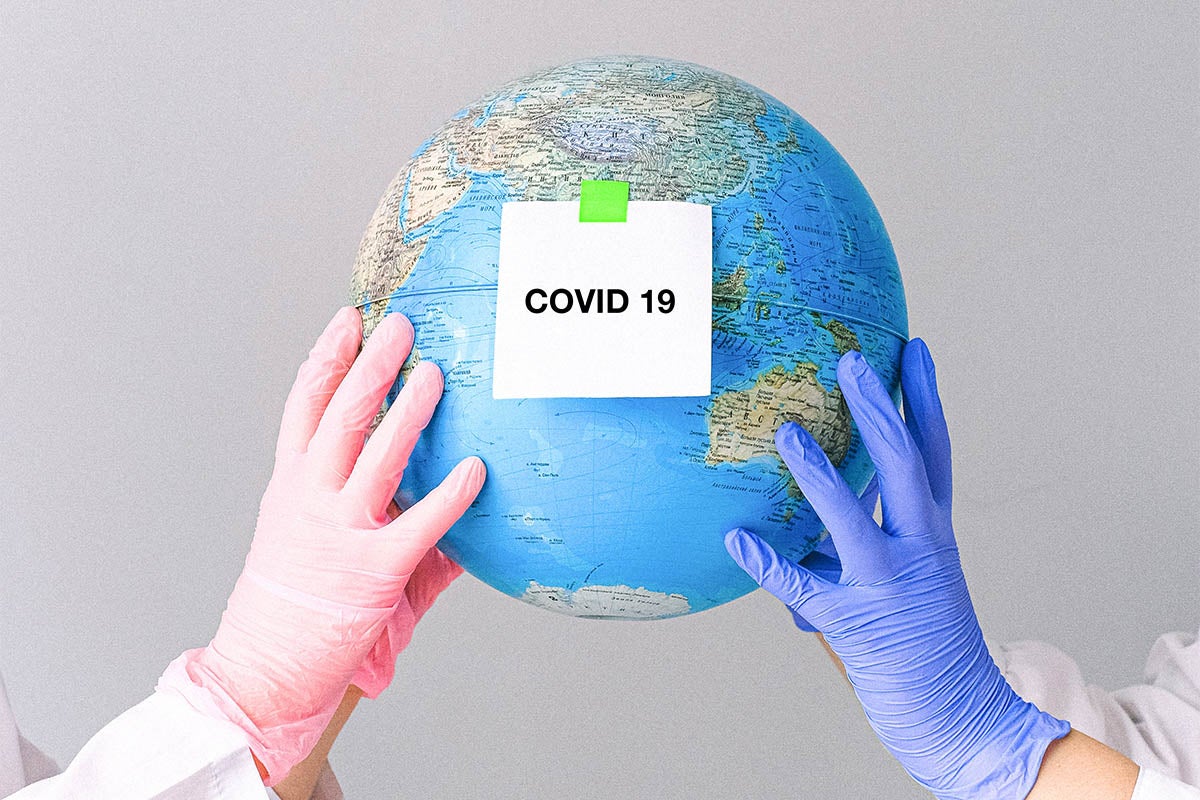Viruses have been around for nearly 500 million years. So what happened to make the COVID-19 virus into a pandemic? How did this virus appear out of nowhere and then spread to millions across the globe? For answers, we turn this week to Griffith Parks, associate dean for research at the College of Medicine, director of the Burnett School of Biomedical Sciences, and a nationally recognized virus expert.
You may be surprised to know most of us have caught other versions of the coronavirus — it’s actually one of the types of viruses that can cause the “common cold.” The COVID-19 virus is a unique type within the larger coronavirus family. Humans have never experienced it before, so no one had developed an immunity to it.
Many viruses, in fact, are common in wild animals — no, there’s no evidence you can get COVID-19 virus from your dog or cat. In the wild, these viruses are often less severe — they may sicken or kill some weaker animals but are not a widespread threat to the entire population. Current research evidence suggests that the COVID-19 virus may have originated in bats.
The danger comes when these viruses find a way to spread to humans. They either mutate to become more infectious to humans or we come in very close contact with a wild animal. This can happen as more human development encroaches on wild habitats. That encroachment is one of several reasons why we have seen pandemics increase in the past 15 to 20 years.
This animal-to-human spread is thought to be very rare. But once a virus jumps to people, it can rapidly spread through the population because of our behaviors. Different viruses can spread by different ways — through blood (hepatitis virus), sexual interactions (HIV), eating (norovirus) or through the air. COVID-19 spreads through air droplets we create when we cough, sneeze or speak. We take 12 to 20 breaths a minute while resting and we share each other’s air. That’s the danger of airborne viruses. And we’ve learned that one of the hallmarks of the COVID-19 virus is the ease with which it spreads between people. Now, combine that with today’s mobile society — you can fly from Dublin to Australia in a day – and you see how an airborne virus that begins in one part of the world can spread quickly and easily across the globe. And once it enters a community, an airborne virus spreads because of our social nature — we live in crowded cities and often gather in bars, restaurants, concerts, theme parks and sporting events.
That’s why wearing a face covering and physical distancing are so important in controlling the spread of COVID-19. Viruses exist for one purpose — to infect a person and spread to the next person. And they’re very good at it. Without a vaccine or other therapies, the only way to stop an airborne virus is to change our behaviors that allow it to easily jump from one person to another.
We can also help reduce pandemics through continued scientific research. For example, scientists and physicians have experience with the flu virus – every year, we track flu viruses across the globe and analyze that year’s strain in order to prepare for a possible outbreak of certain strains. That kind of survey research must continue worldwide. We must discover the microbiology of how a virus moves to human populations or changes to become more contagious to humans. Knowledge is power and the first step to prevention.
There is no way to escape viruses. They have been around as long as life itself. But through our actions – our behaviors and scientific outreach — we can better prevent their transmission.




